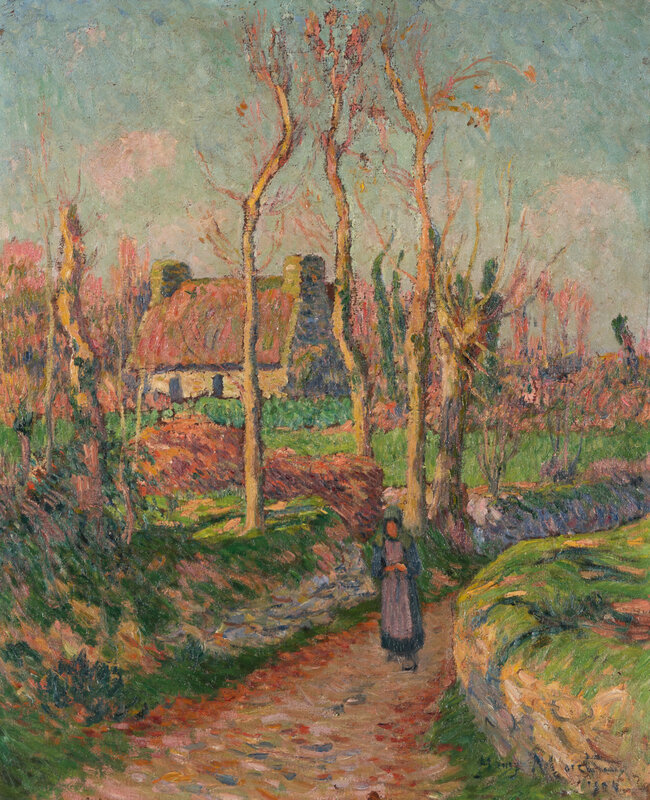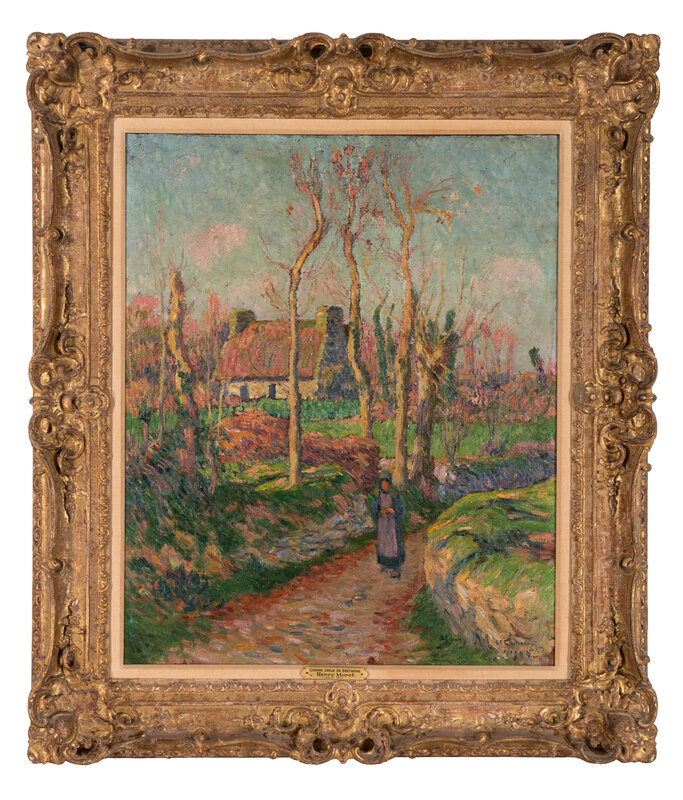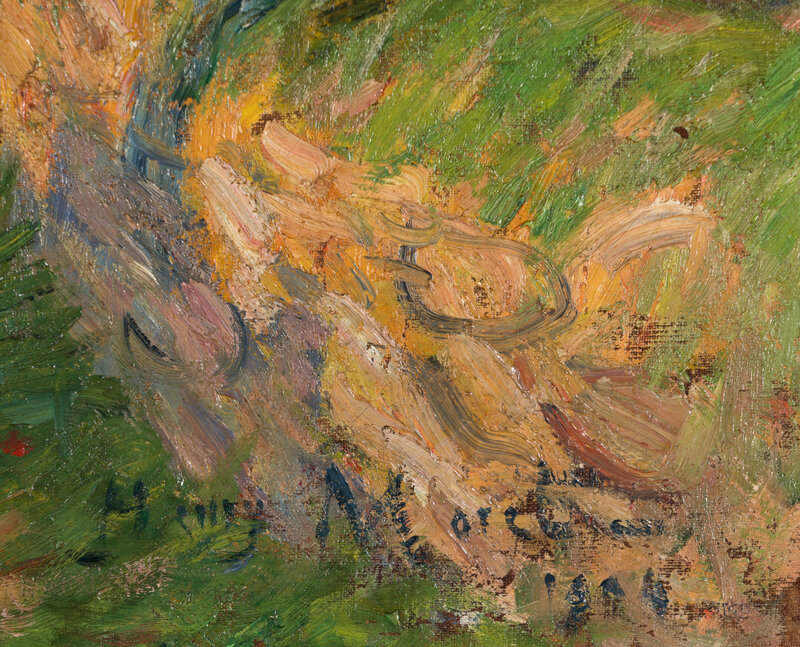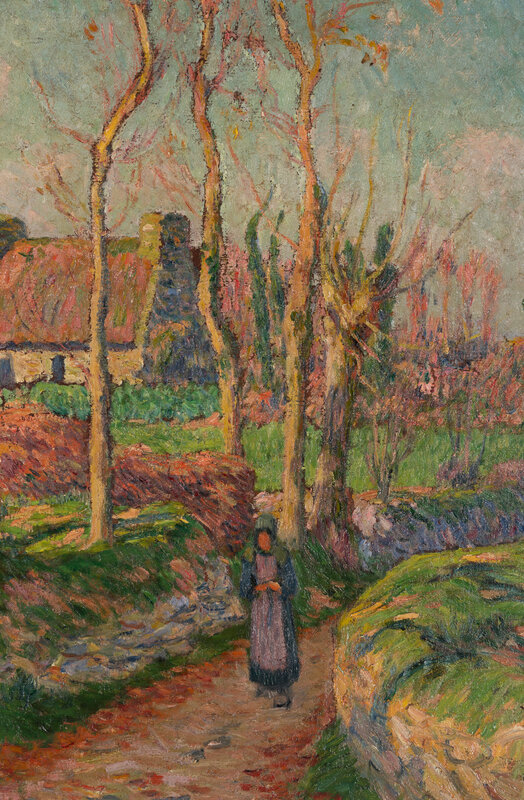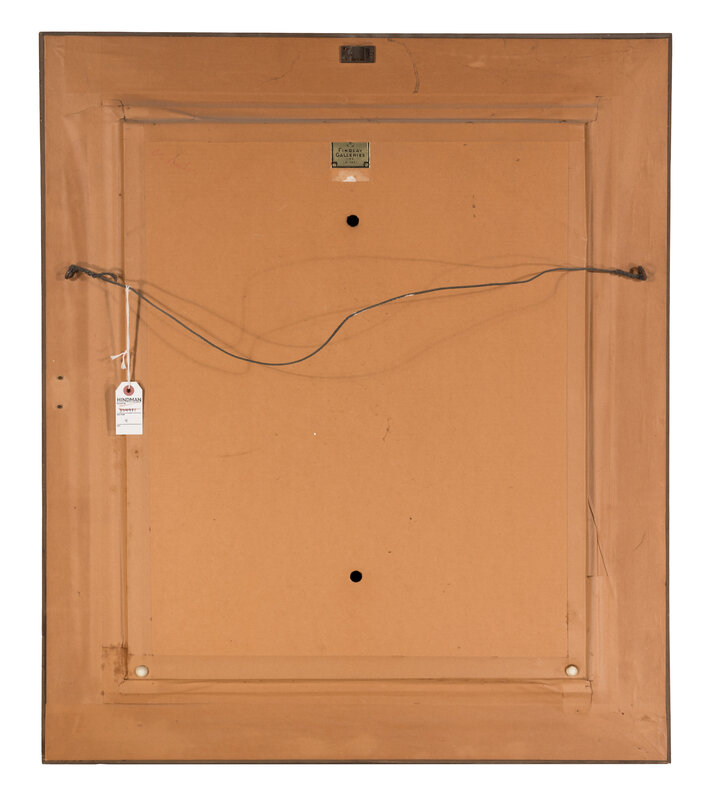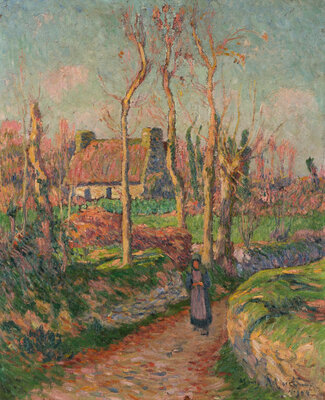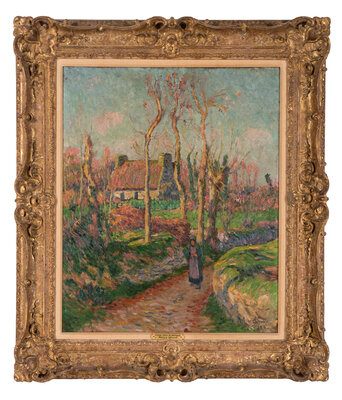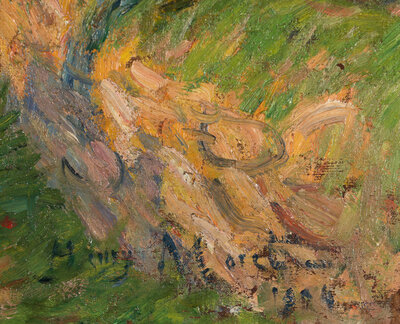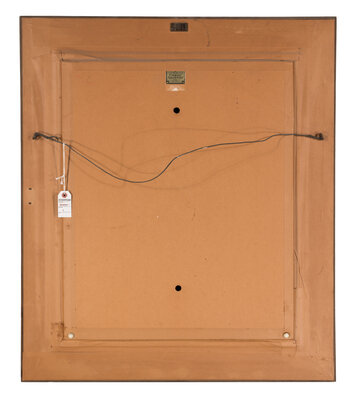Henry Moret
(French, 1856–1913)
Chemin Creux en Bretagne, 1904
Sale 2087 - Impressionist and Modern Art, Featuring the Collection of John and Rosetta Gernon
Oct 28, 2024
12:00PM ET
Live / Philadelphia
Own a similar item?
Estimate
$60,000 -
100,000
Price Realized
$63,500
Sold prices are inclusive of Buyer’s Premium
Lot Description
Henry Moret
(French, 1856–1913)
Chemin Creux en Bretagne, 1904
Oil on canvas
Signed Henry Moret and dated (lower right); also inscribed Henry Moret, titled, and dated (on label affixed to stretcher on the reverse)
29 x 23 3/4 in. (73.7 x 60.3cm)
This lot is located in Philadelphia.
Property from the Estate of Dr. John Talbot Gernon and Mrs. Rosetta Place Gernon.
We wish to thank Mr. Jean-Yves Rolland for confirming the authenticity of the present lot. The painting will be included in the forthcoming new edition of the Catalogue Raisonné of the artist's work, and will be accompanied by a Certificate of Authenticity.
Please note this work will be on view at our New York City office, at 32 E. 67th Street, from October 24th to October 26th (included), 9am-5pm.
Provenance:
Findlay Galleries, Chicago, Illinois.
Acquired directly from the above by the present owner.
Lot Essay:
"Henry Moret is all about Brittany; Brittany is all about Moret." This observation by author Henri Hugault in 1959 accurately describes Henry Moret's paintings, as many depict Brittany, a craggy and isolated peninsula in the northwest of France.
Henry Moret first discovered the rugged landscapes of Brittany when he was nineteen, while on military service in Lorient. Although he subsequently returned to Paris and lived in the capital for several years, studying under Jean-Léon Gérome and Jean-Paul Laurens at the École des Beaux-Arts, Moret eventually decided to return to Brittany. He briefly stayed in Le Pouldu in 1881, before moving to Pont-Aven, where he met Émile Jourdan, Charles Lavant and Paul Gauguin, who strongly influenced his work. In 1895, he was introduced to the Galerie Durand-Ruel, who turned out to be his main client and patron until his death.
The present painting depicts a lone peasant woman walking towards the viewer on a deep and sinuous path in the countryside. Judging from the accumulated fallen leaves on each side of the pathway, the stacked hay in the background, as well as the bare trees, the scene takes place in late autumn. This feeling is comforted by the generally warm palette of pinks, reds and oranges, which nicely contrasts with the remaining pockets of greens and blues here and there. The subject matter, very mundane, informal and casual -paired with the season- shows Moret’s true affinity for the Bretonne region. Contrary to other artists affiliated with the Pont-Aven colony who only visited for the summer, Moret spent the whole year in Brittany and chose to spend his life there. He didn’t set off for other, more exotic adventures and instead, patiently recorded every season, every village on his canvas. As Catherine Puget, a former conservator at the Musée du Pont-Aven, once wrote: “Moret anchored himself to Brittany and for thirty-five years, traveled tirelessly across the region, attentive to both its permanent character and its fleeting elements (...) He had a thirst for solitude and for purity; he was a simple and discrete being, in love with nature and well-liked by the community, into which he integrated seamlessly, hunting, fishing and playing cards with the local inhabitants."
Chemin Creux en Bretagne denotes an important moment in Moret’s career. With its thick impasto and loose brushwork, it is the visual proof Moret has immersed himself more within Impressionism. He blends the colors together rather than keeping them separate, as Gauguin once taught him to, thus creating a wonderful example of an artist’s mature and expert style.
Condition Report
Auction Specialist
